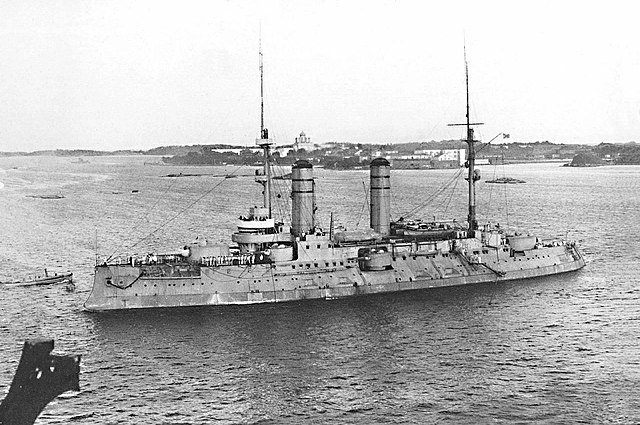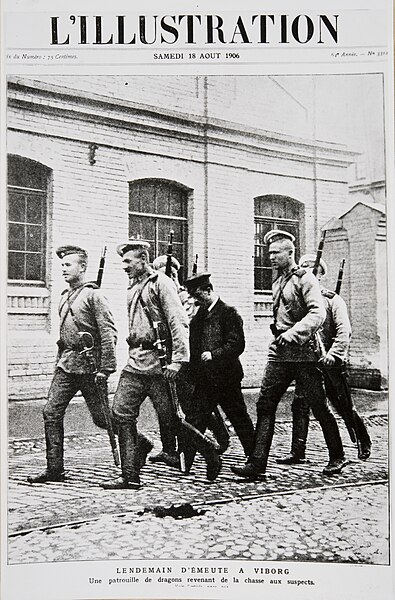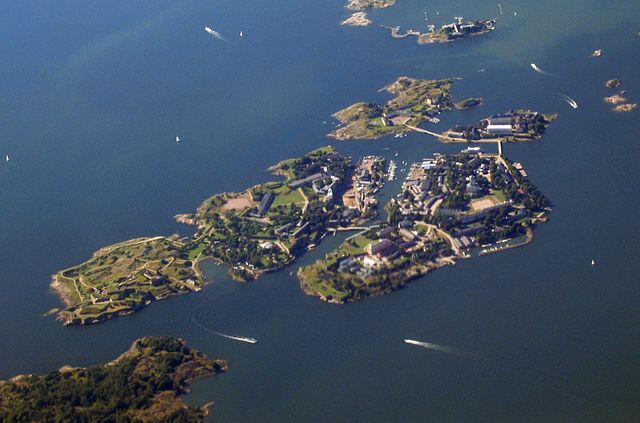The Sveaborg rebellion was an Imperial Russian military mutiny which broke out on the evening of 30 July 1906 amongst the garrison of the coastal fortress of Sveaborg in the coast of Helsinki in the Grand Duchy of Finland. The mutiny was part of the aftermath of the Russian Revolution of 1905, which by summer 1906 had effectively been suppressed in most other regions of the Russian Empire.
Helsinkians watching the rebellion
Tsesarevich helped to put the rebellion down from sea.
Arrested Labour Corp members in Aleksanterinkatu.
Russian gendarmes taking Red rebels as prisoners
Suomenlinna, or Sveaborg, is an inhabited sea fortress composed of eight islands, of which six have been fortified; it is about 4 km southeast of the city center of Helsinki, the capital of Finland. Suomenlinna is popular with tourists and locals, who enjoy it as a picturesque picnic site. Originally named Sveaborg, or Viapori as referred to by Finnish-speaking Finns, it was renamed in Finnish to Suomenlinna in 1918 for patriotic and nationalistic reasons, though it is still known by its original name in Sweden and by Swedish-speaking Finns. Due to its strategic geographical location, it sometimes used to be known as Gibraltar of the North.
An aerial view of Suomenlinna
Bastion Zander
Augustin Ehrensvärd's grave at Suomenlinna
Kuninkaanportti, The King's Gate








